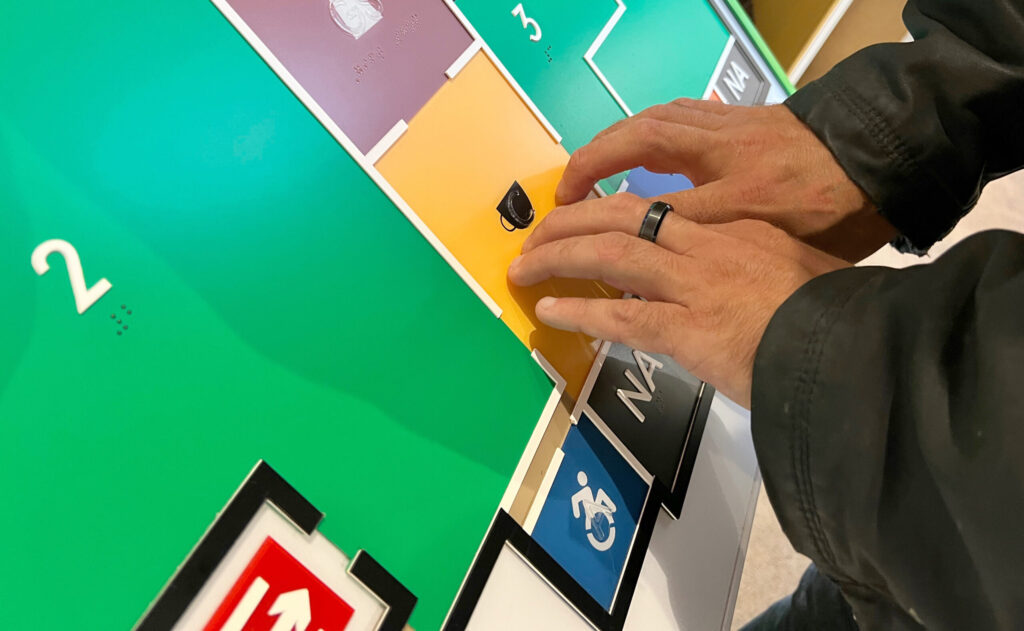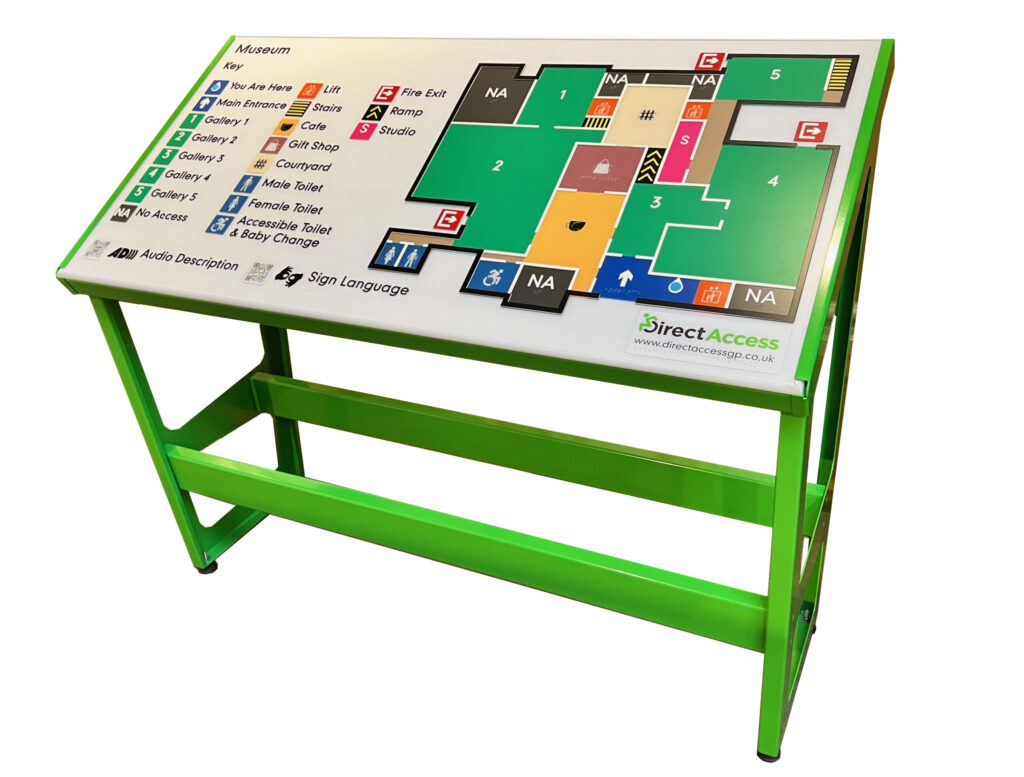
In the past ten years or so wayfinding has undergone massive changes that has made getting around more accessible to all. With the ease of availability of services such as Google Maps, finding your way from A to B has never been easier.
However, despite the ability to guide us through most populated environments on the planet, it remains the case that wayfinders developed by the big technology services are limited in their reliability, as while any map connected to the internet via a smartphone is a convenient aid in today’s digital age, even services like these aren’t enough to keep some of us from getting lost. This is especially true if you are a Person of Determination. As Google Maps often takes time to update, and the top satnavs still misinterpret the best routes to take, we still have a way to go to make wayfinding that is truly convenient and fully accessible.
It’s for these reasons that physical wayfinding such as static maps or paper maps is still utilised. Aside from being more professional, striking, and accessible, detailed physical wayfinding can help commercial businesses bring a positive visitor experience to the population. It’s why we still see physical static maps used in entertainment complexes, shopping centres and malls, zoos, national parks, and heritage sites. Modern static signage is an integral part of architectural design, being useful for those who are not literate with technology, reliable if updated regularly, (and if designed properly) aesthetically pleasing.
But what is wayfinding in a modern context? And how can we ensure that it legitimately serves everyone regardless of ability?
Wayfinding is a set of graphic and text-based presentations that offer visitors information, helping people to navigate everywhere from huge urban settlements to small parks and trails. In effect, the goal is to educate its users on the immediate environment, allowing them to keep track of their surroundings and avoid getting lost. Using wayfinding signage, people can check where they are and where they want to go.
Some might consider static maps old-fashioned given the real-time location-based response that a smartphone app offers its users. However, effective static maps offer various features that enhance usability, such as color contrast between the elements presented, recognizable symbols and pictograms, large clear fonts, and are usually presented in well-lit areas, accommodating visually impaired individuals and making the best use of their residual vision – which is a factor that a mobile phone cannot duplicate to the same effect. Furthermore, the most effective physical wayfinding signage will minimize the use of reflective surfaces to further accommodate interpretation.
Static maps also assist site visitors in recalling complex layouts in a way that a small screen on a mobile phone cannot, such as hospitals, retail centres, and theme parks – areas which can often be a struggle, particularly during peak times when they are at their most overwhelmingly busy. Furthermore, they help people quickly identify a particular building or amenity on your site they want to visit.
Overall – accessible and inclusive signage and wayfinding has the power to not only accommodate, but empower, allowing People of Determination to feel welcomed on your site, particularly those who have visual impairments, learning disabilities, or anxiety. By accommodating a broad range of visitors with different attributes, you also increase the likelihood of disabled populations interacting with and wanting to visit your site again.
Furthermore, it allows site owners to comply with the Equality Act, creating a culture of equal access to information, which is a key element in creating truly accessible built environments.
As the Direct Access team is formed of a diverse range of People of Determination with different personal requirements, we have worked together to create our own unique map (the Tactile Map Board) – a static map that encompasses numerous different accessible elements, marrying the best elements of physical maps with the convenience of mobile phone technology, offering user identification, directional information, and information about the site itself.
By following the RNIB guidelines with tactile and Braille, we also included pictorial information and QR code technology, linking users to sign language content that describes the map and the various locations pictured, as well as audio descriptions of the users’ location and where to find someone to assist you.
Children can use it, elderly people can use it, and sign language users can use it. It is a map that creates access for everybody.
